The DERConnect Testing Facility
DERConnect is an all-inclusive facility enabling testing of novel approaches and algorithms for real-world applications. While the number and diversity of distributed energy resources is on the rise, the adoption of these resources is often hindered by concerns about safety, reliability, and costs. Our mission is to help universities, utilities, and industry leaders better understand how to integrate renewable energy resources into the power grid safely and effectively.
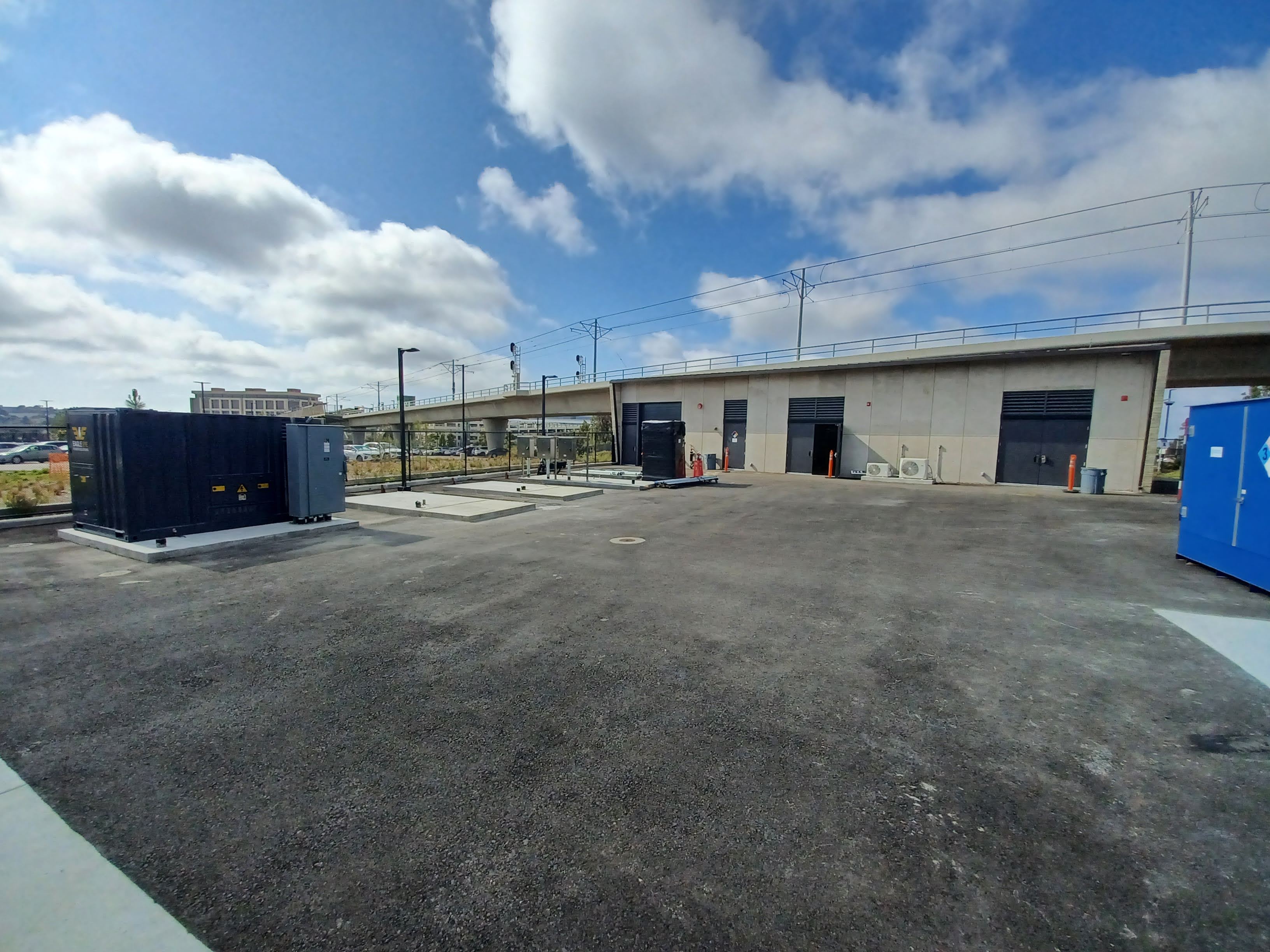
Testbed Architecture
DERConnect features a diverse set of assets that can all be interconnected to create a wholistic approach to testing. At its core, the testbed has a highly flexible power system laboratory where real power systems can be tested. Real-time simulators can operate alongside these power systems via our grid emulator / amplifier, which effectively connects the digital and real worlds together. Software now drives modern technology and the testbed hosts over 2,000 edge computing nodes that can control simulated and real equipment. All tests are facilitated using the DERConnect DERMS platform to allow for test management and the rapid deployment of algorithms.

1 / 1
Power Systems Laboratory
The power systems laboratory of DERConnect includes fives lithium-ion batteries (total 0.5 MW, 1MWh), an ultracapacitor, programmable load bank, and grid emulator which connects to our simulators.
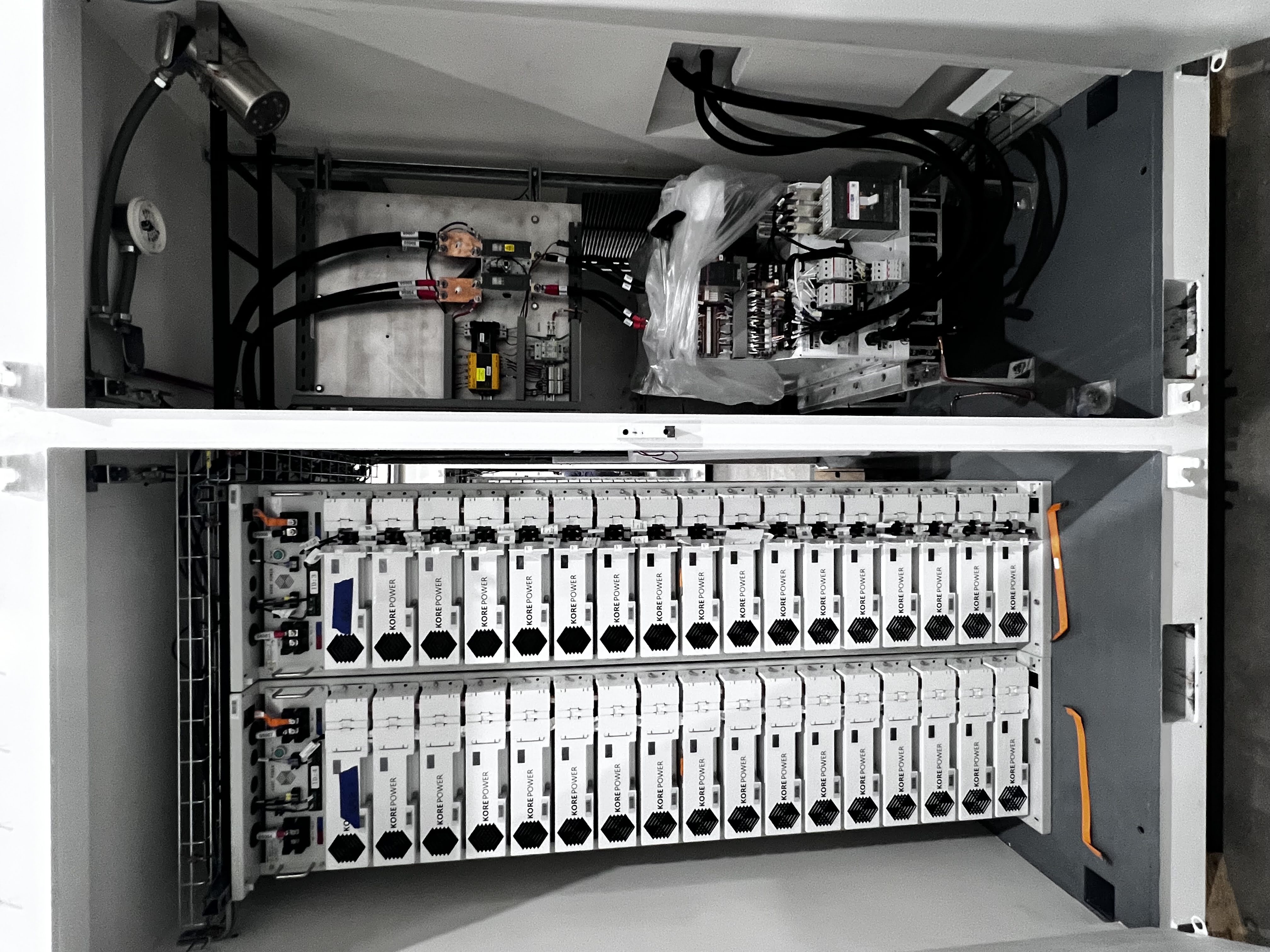
Battery Energy Storage System #1
- Manufacturer: KORE Power
- 250kW, 332kWh, 480VAC
- Lithium Ion Batteries
- EPC Power PD-250 bi-directional inverter
- Grid-Parallel Mode - The BESS can synchronize to a grid in which other power sources are providing a reference voltage and frequency.
- Island Mode – The BESS is designed to be capable of grid forming and supporting an islanded Microgrid, including black-start capability as a standard feature.
1 / 10
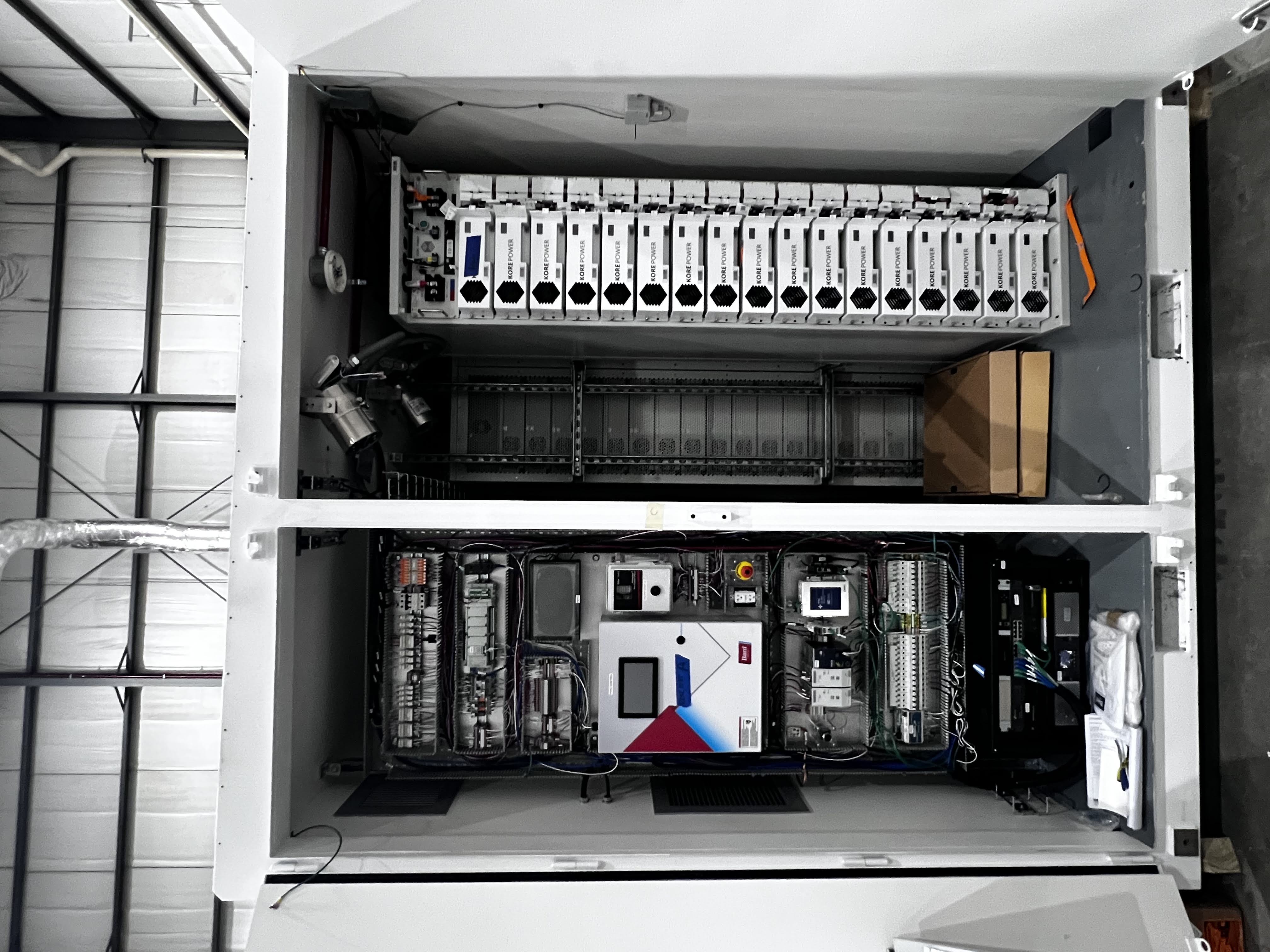
Battery Energy Storage System #2
- Manufacturer: KORE Power
- 125kW, 221kWh
- Lithium Ion Batteries
- Dynapower MPS-125 bi-directional inverter
- Grid-Parallel Mode - The BESS can synchronize to a grid in which other power sources are providing a reference voltage and frequency.
- Island Mode – The BESS is designed to be capable of grid forming and supporting an islanded Microgrid, including black-start capability as a standard feature.
2 / 10
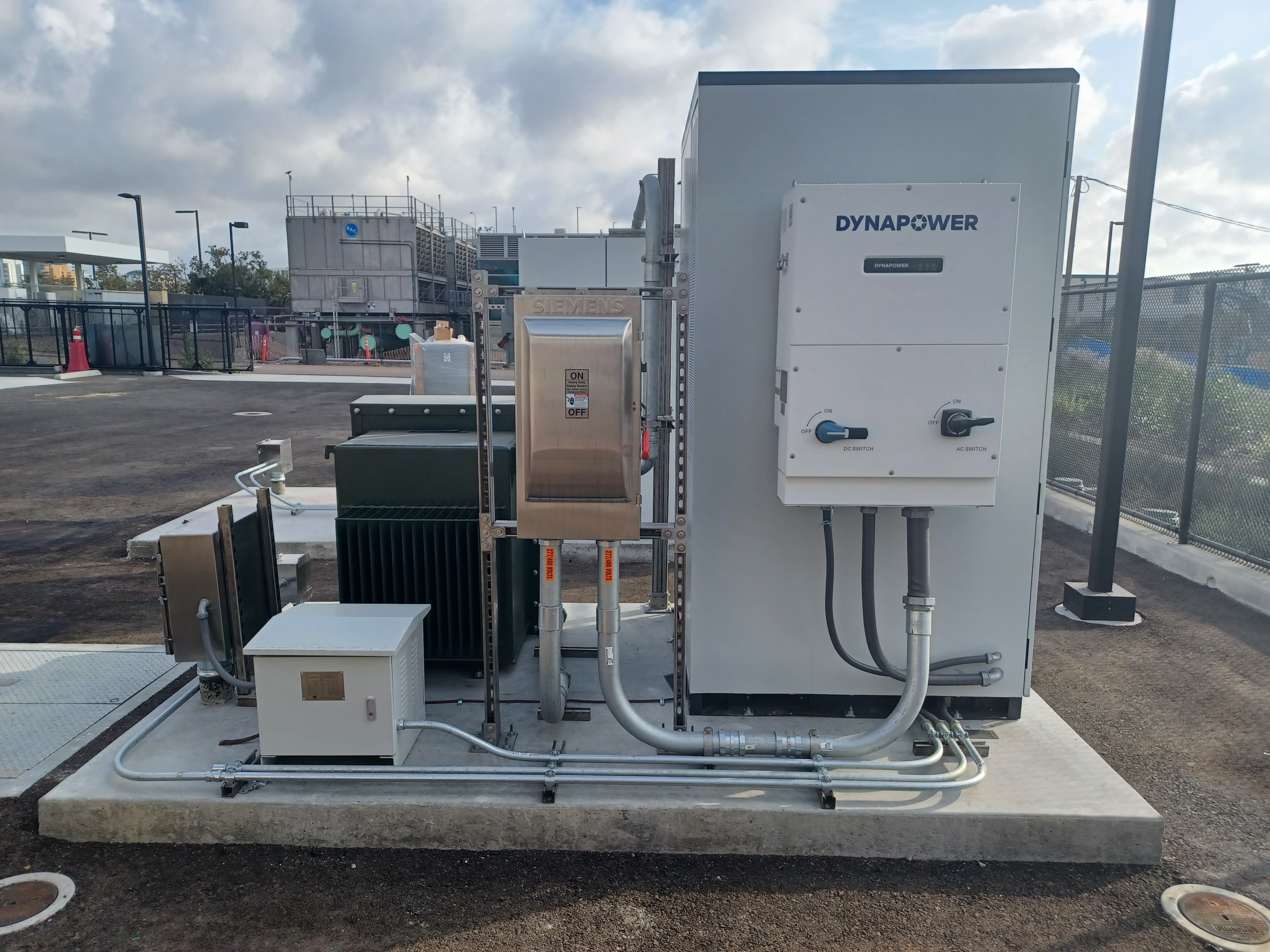
Battery Energy Storage System #3
- Manufacturer: Great Power
- 125kW, 376kWh
- Lithium Ion Batteries
- Dynapower MPS-125 EHV bi-directional inverter
3 / 10
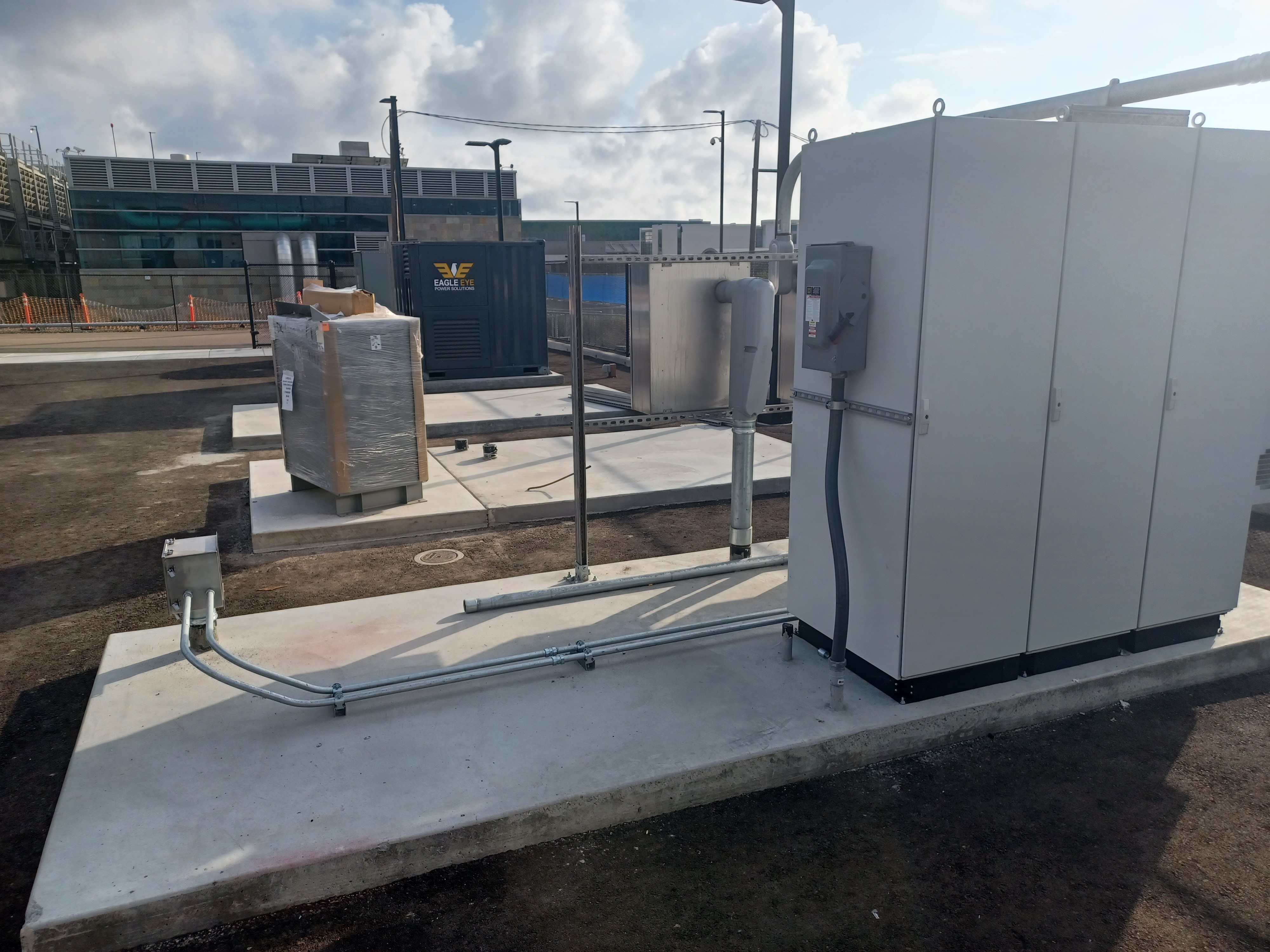
Battery Energy Storage System #4 & #5
- Manufacturer: Kronus
- Two Independent 72 kWh/40kW racks sharing controls and an enclosure
- Lithium Ion Batteries
4 / 10

Ultra-capacitor
- Manufacturer: Kronus & Skeleton Technologies
- 120kW, 28kWh
- 60 Second Charge / Discharge
- Dynapower MPS-125 EHV bi-directional inverter
5 / 10
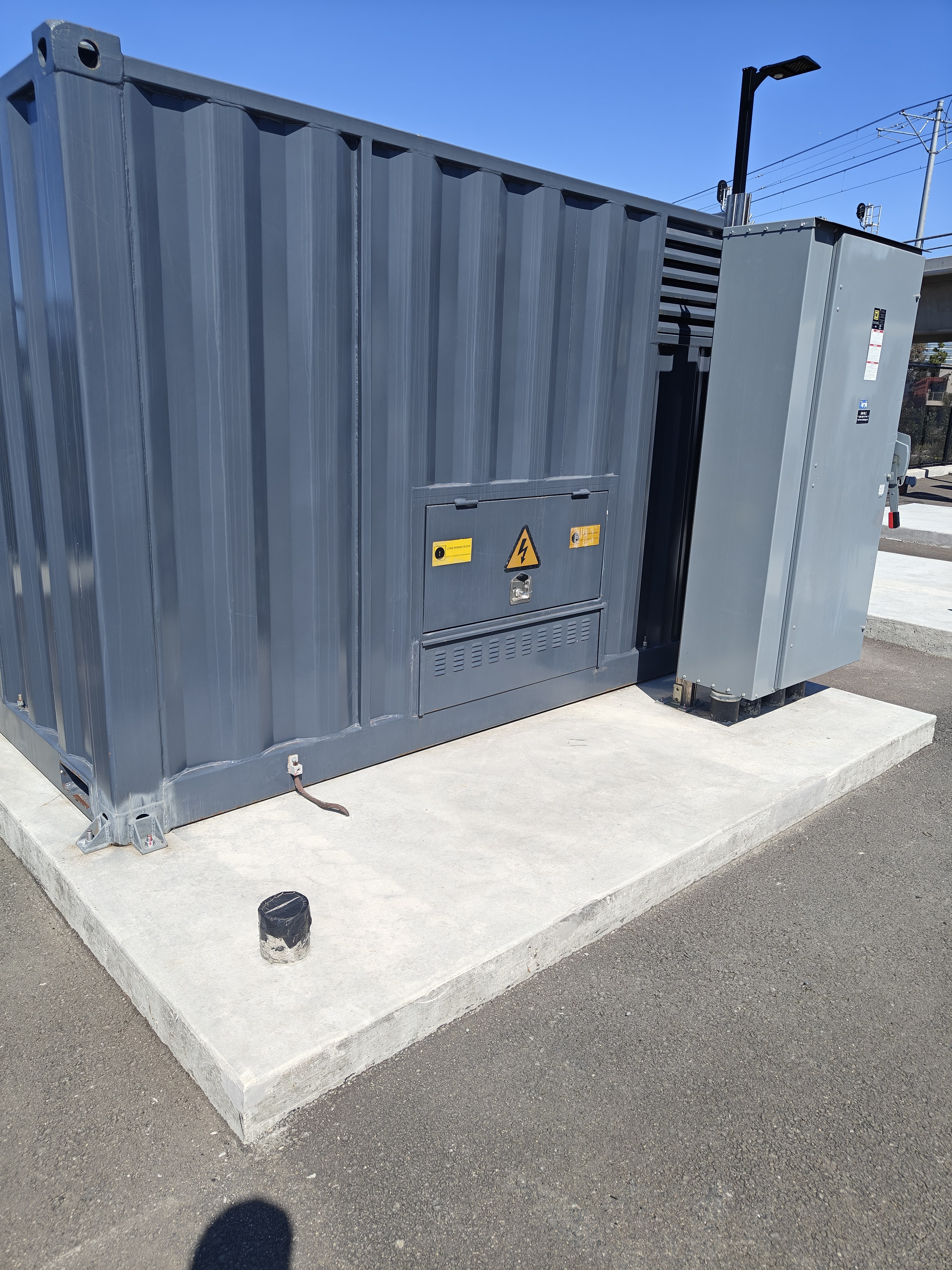
Programmable RLC Load Bank
- Manufacturer: Eagle Eye Power Solutions, LLC
- Apparent Power: 500 kVA
- Resistive Load: 400kW
- Load: 300kvar
- Capacitive Load: 300kvar
- 0-1 Power Factor
6 / 10
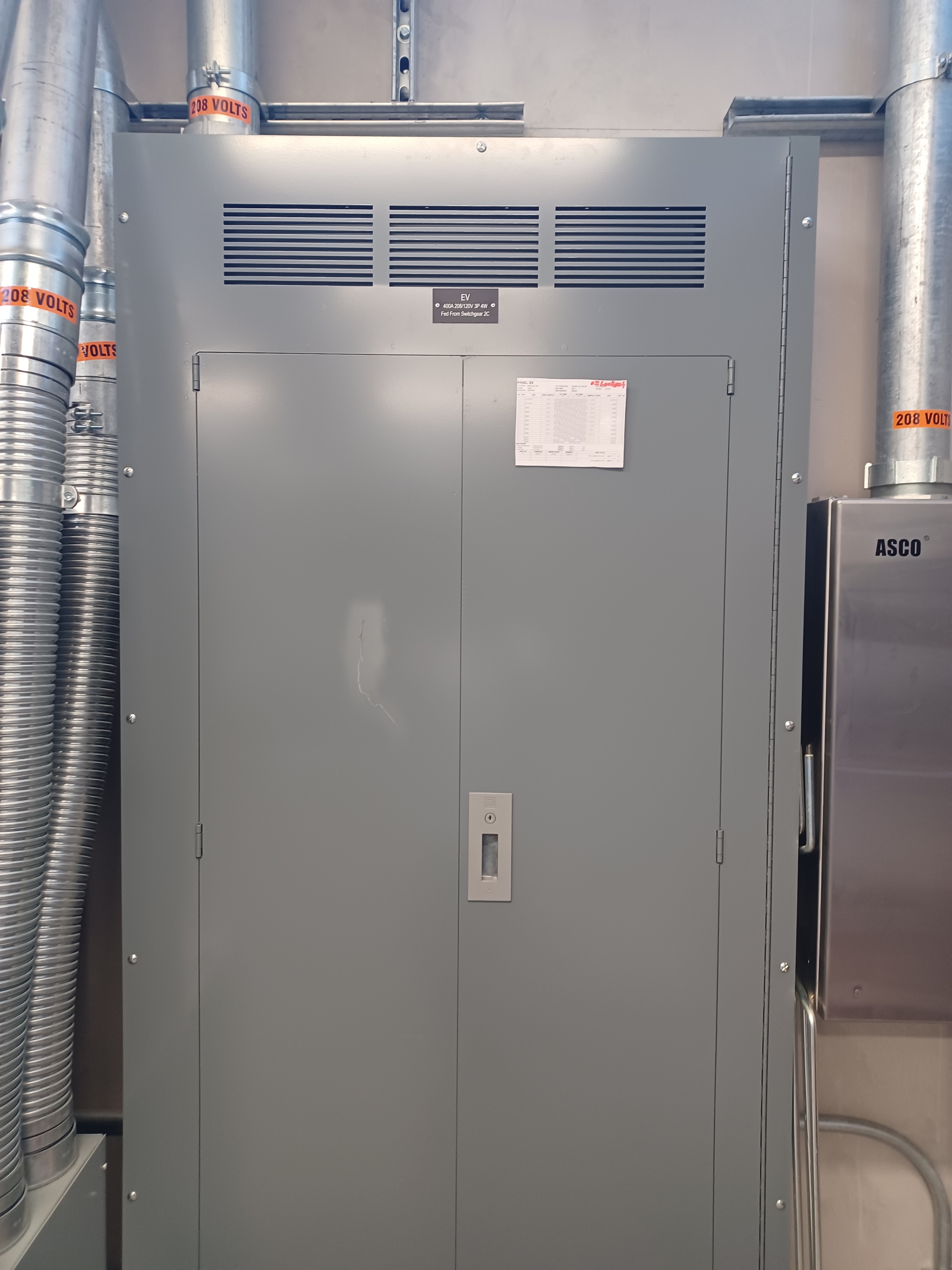
EV-Panel
- Enables connects to Level 2 EV chargers
- 400A capacity, 208V
7 / 10
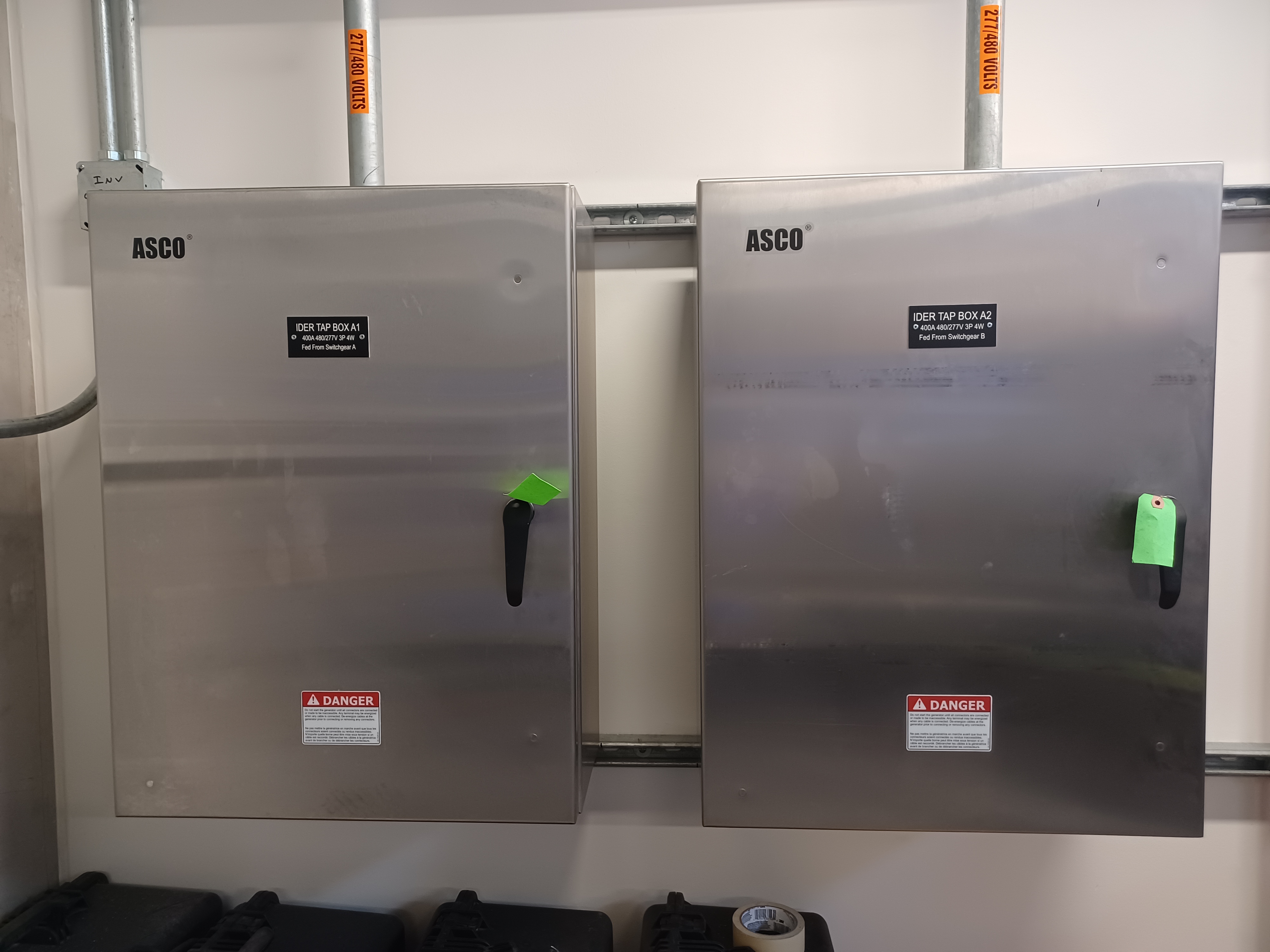
Tap Boxes
- Enables user hardware to connect to the testbed
- Outdoor Tap Box 1: 480V, 400A, 3P
- Indoor Tap Box 3: 480V, 400A, 3P
- Indoor Tap Box A1 & A2: 480V, 100A, 3P
- Outdoor Tap Box 5: 208, 400A, 3P
- Indoor Tap Box 4: 208V, 400A, 3P
8 / 10
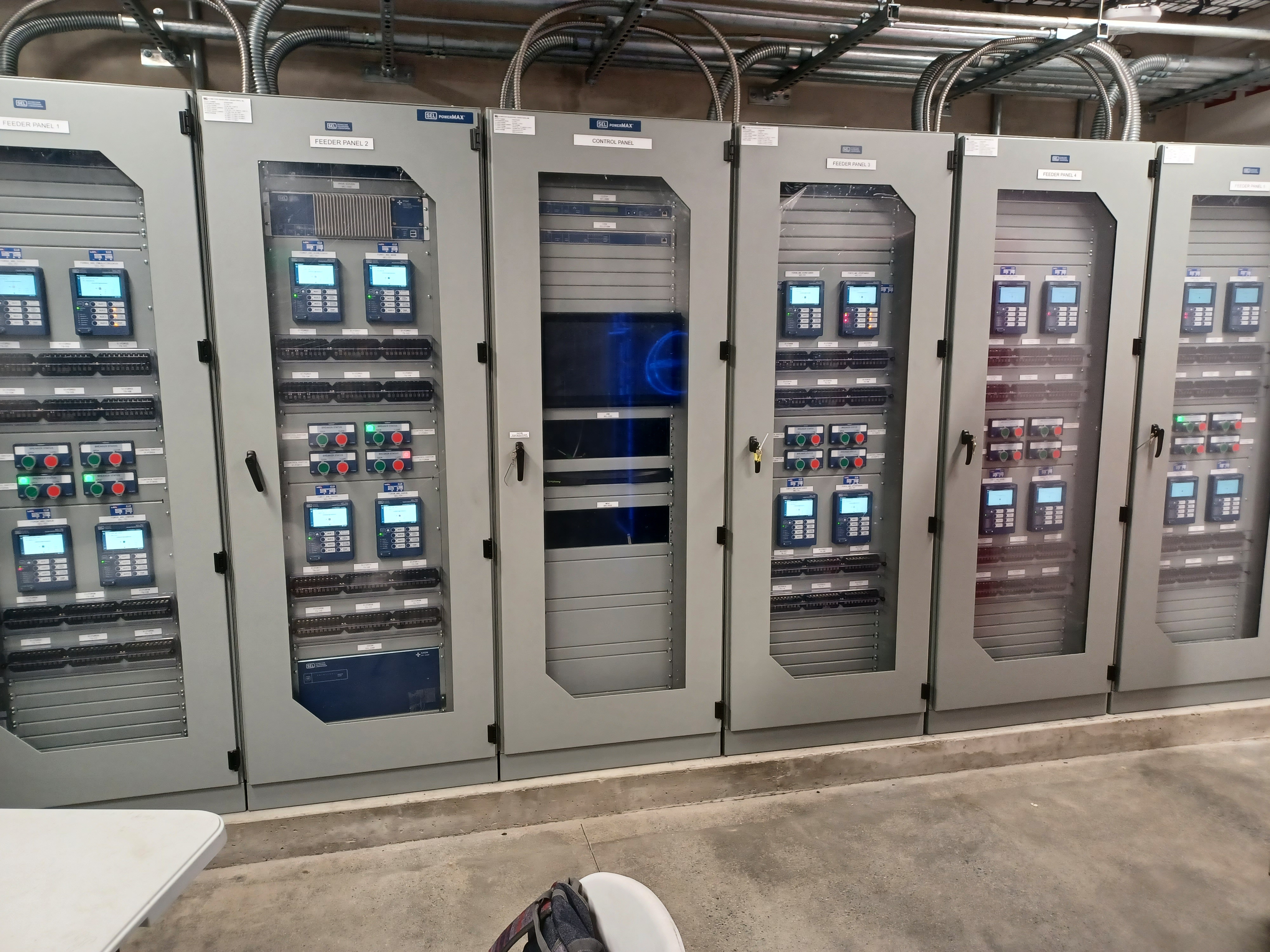
Microgrid Controller
- Manufacturer: SEL PowerMax
- Islanding, Black-start, and Resync capabilities
9 / 10
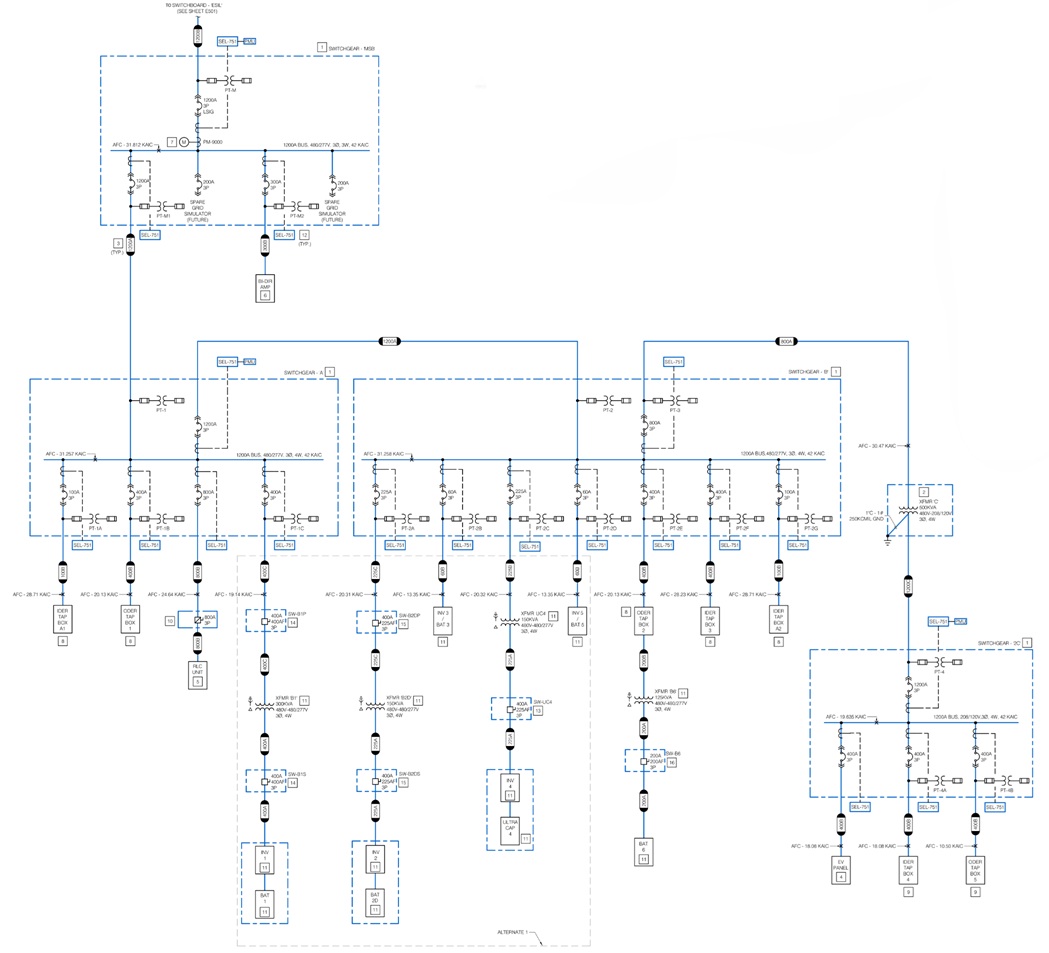
Configurable Power Infrastructure
- Switchgear A: 480V, 1200A Bus
- Switchgear B: 480V, 1200A Bus
- Switchgear C: 208V, 1200A Bus (connected to B via 500kVA transformer)
- Remote switching using the PowerMax system.
- Ability to emulate transmission between A & B using grid emulator.
10 / 10
Real-Time Simulation
Two real-time simulators are available, RTDS and Typhoon HIL. The simulators are capable of network and DER modeling as well as controller and power hardware in the loop testing.
Real-Time Digital Simulator (RTDS)
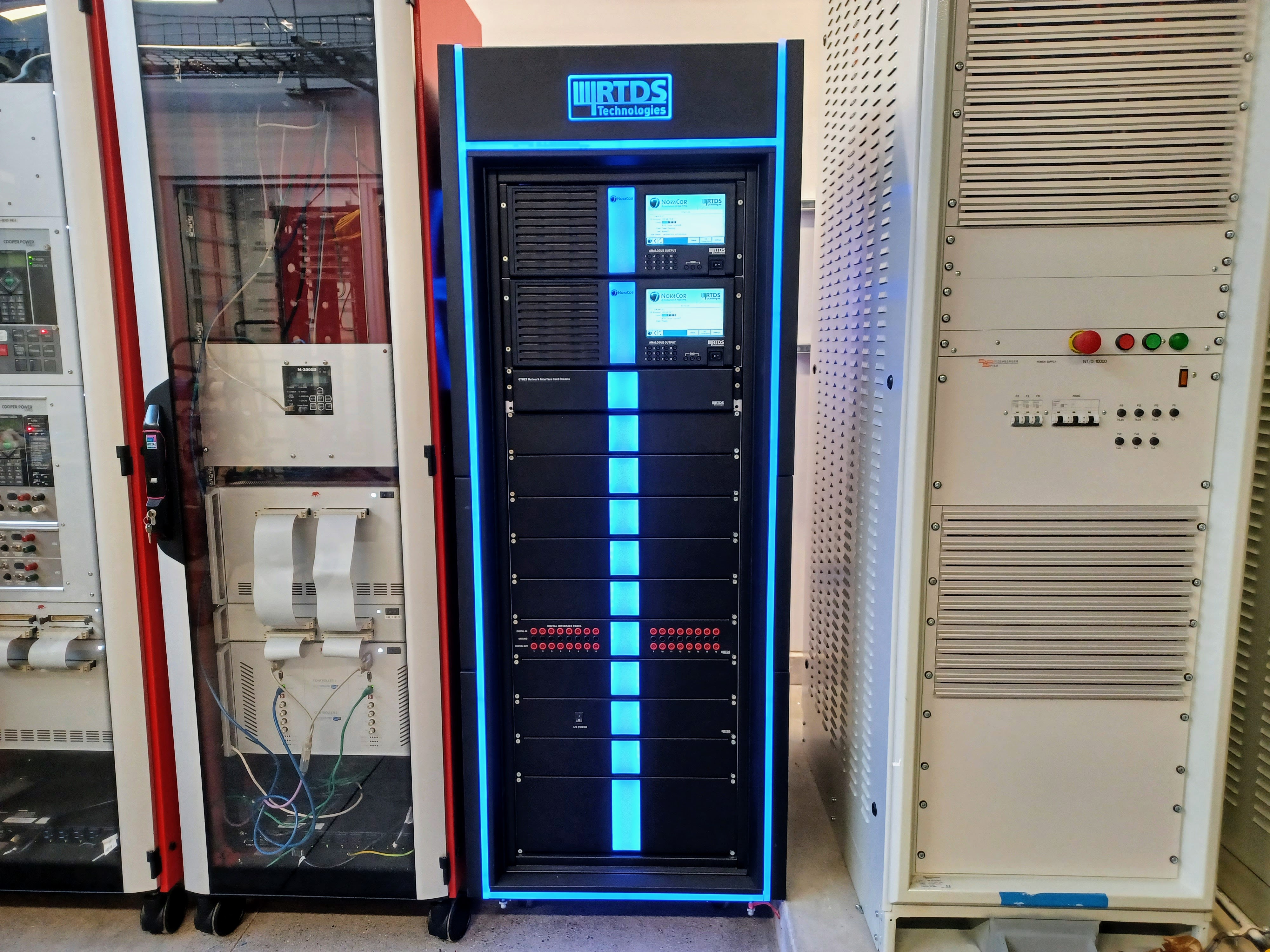
Real-Time Digital Simulator (RTDS)
- DER impact analysis in bulk, distribution systems, or microgrids
- Frequency regulation, voltage regulation, protection design, etc.
- 300 nodes in electromagnetic transient (EMT) mode
- 1500 nodes in transient stability analysis (TSA) mode
1 / 2
Typhoon HIL
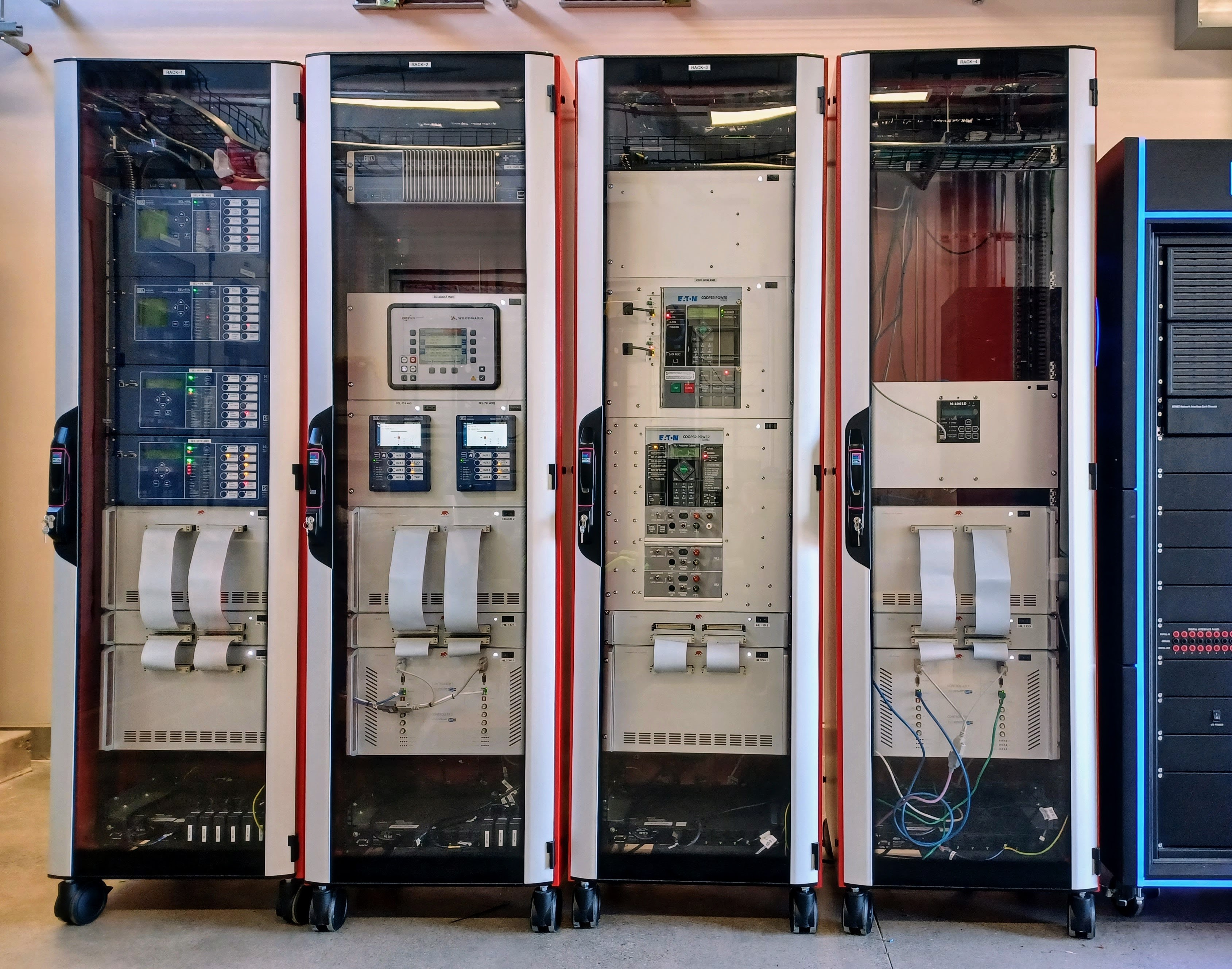
2 / 2
Computing Resources
There are over 2,000 edge computing nodes of varying performance. These nodes act as edge controllers and can be utilized in a variety of roles from device controllers, to system aggregators, and machine learning/AI computing nodes. Code can be easily deployed to the fleet through our DERMS platform. The communication topology of the nodes can also be configured.

Device Nodes
- Low to medium performance computers ideal for recording telemetry and controlling small numbers of devices.
- Examples: Raspberry Pi 5, Axiomtek ICO 120
- OS: Ubuntu Server
1 / 3

Compute Nodes
- Medium to high performance computers ideal for serving as aggregators of systems and for machine learning applications.
- Examples: Axiomtek ICO 310/330/520, Beelink Mini S12/SEi 12/SER5 MaxSER7/SER8 and Intel lNUC 10/12
- OS: Promox
2 / 3
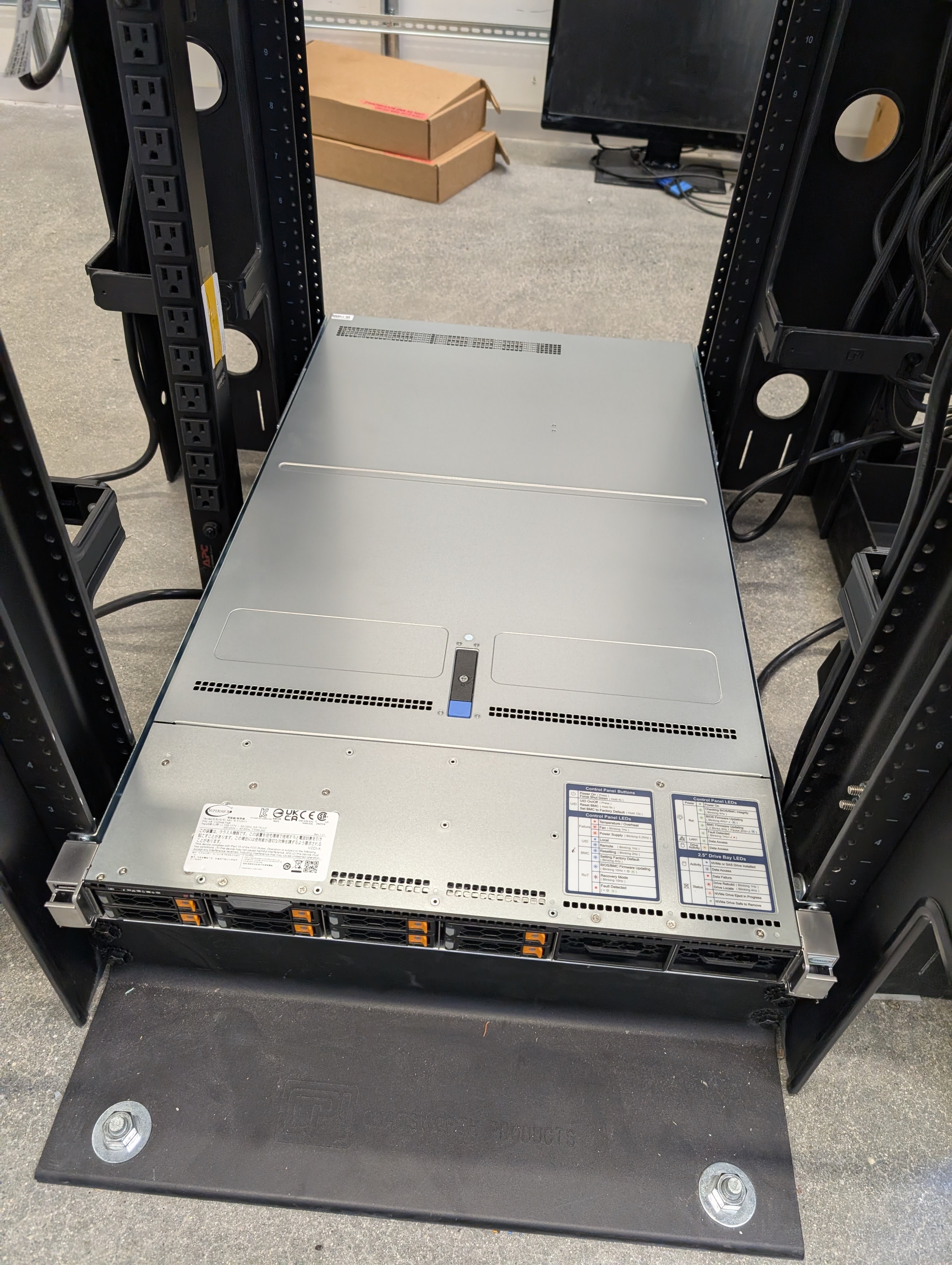
Virtual Nodes
- Server for running virtual nodes.
- Can reconfigure nodes to meet performance needs such as a high number of low performance nodes or a small number of high performance nodes.
- OS: Promox
3 / 3
DERMS Testing Platform
Minsait ACS developed a custom testing platform for DERConnect based on their Onesait Platform, IoTHub, and DERMS products. The testing platform provides users with an environment for facilitating tests, running analytics, and utilizing DERMS tools such as FLISR, hosting capacity, and load flexibility calculators.
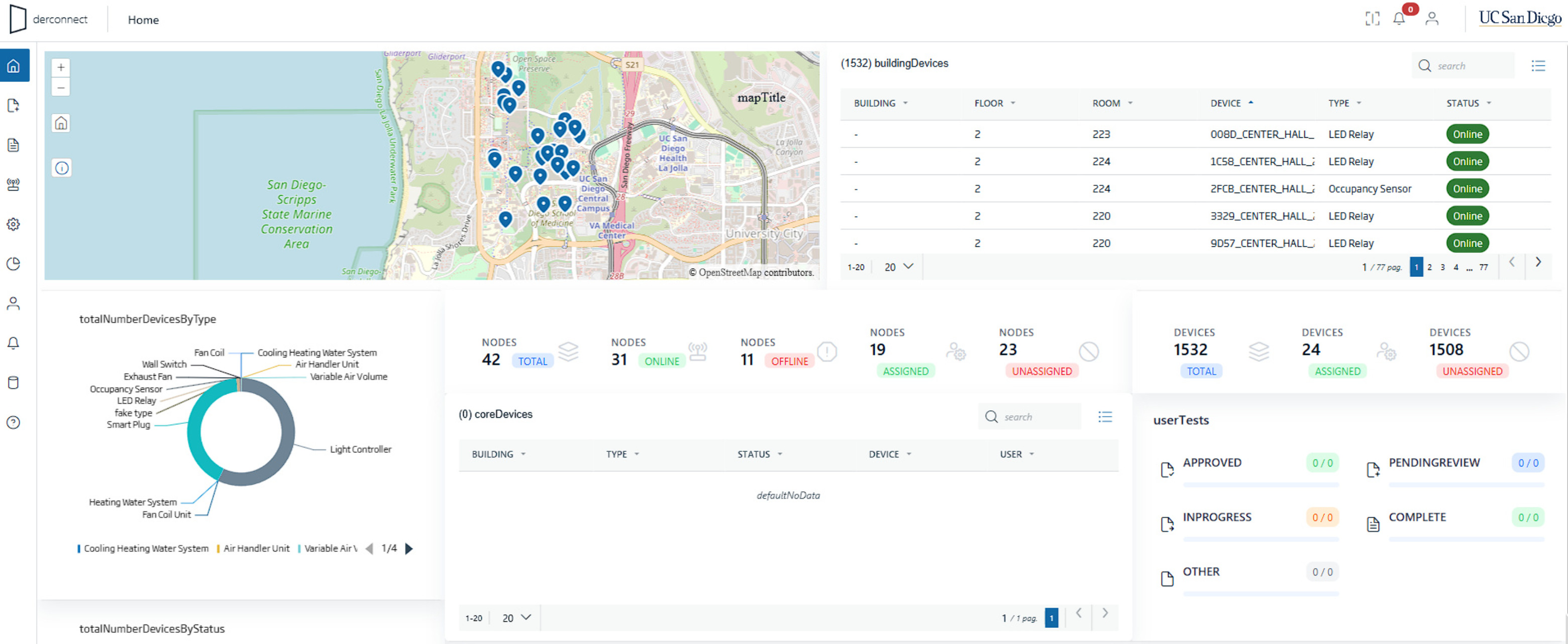
DERMS Platform
- Historical data
- Edge node management
- Git repository
- xWiki documentation
1 / 1
UC San Diego – A Living Laboratory
The testbed includes real devices throughout the UCSD campus.
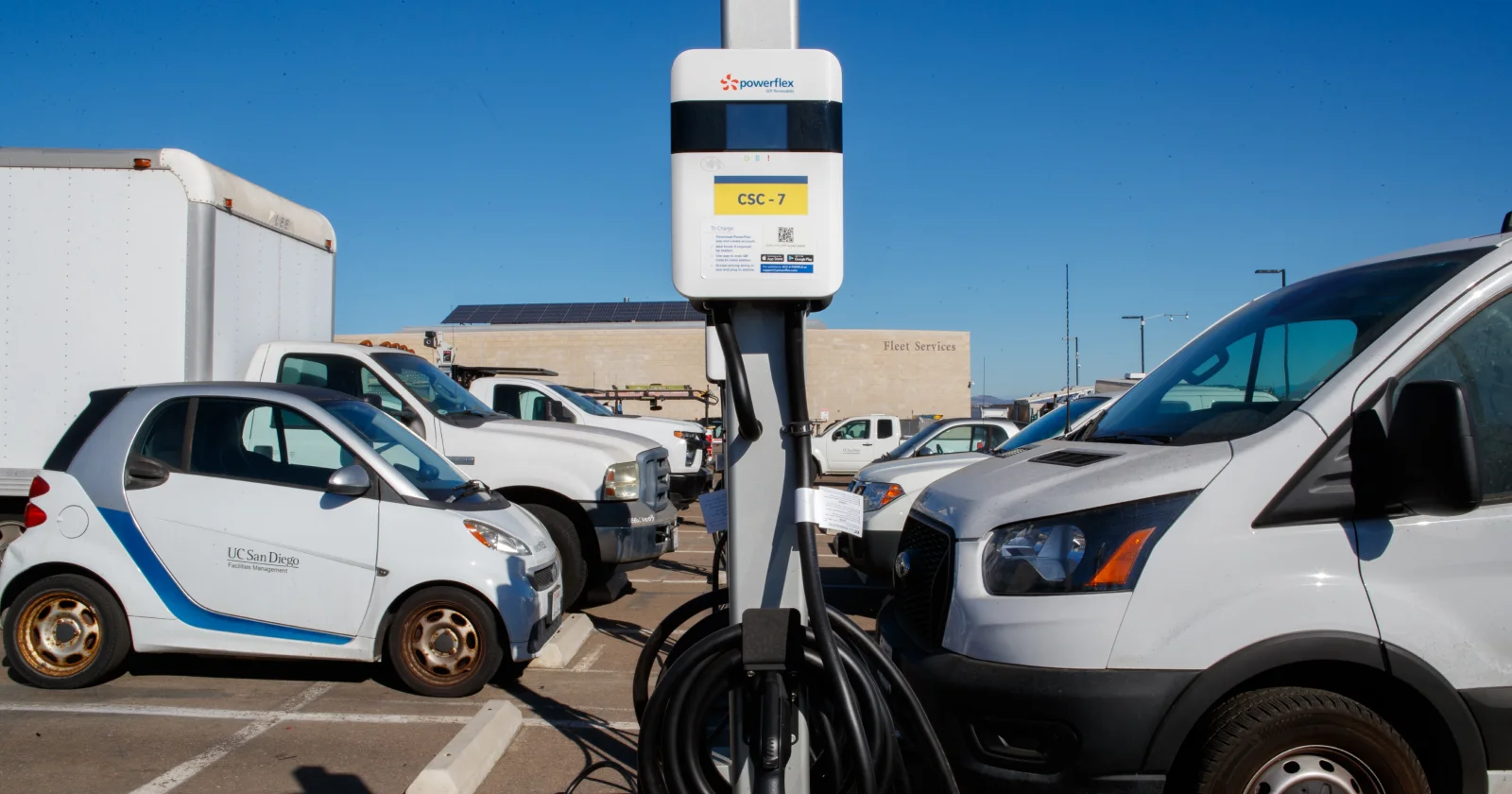
EV Charging Stations
- 800 PowerFlex EV chargers
1 / 7
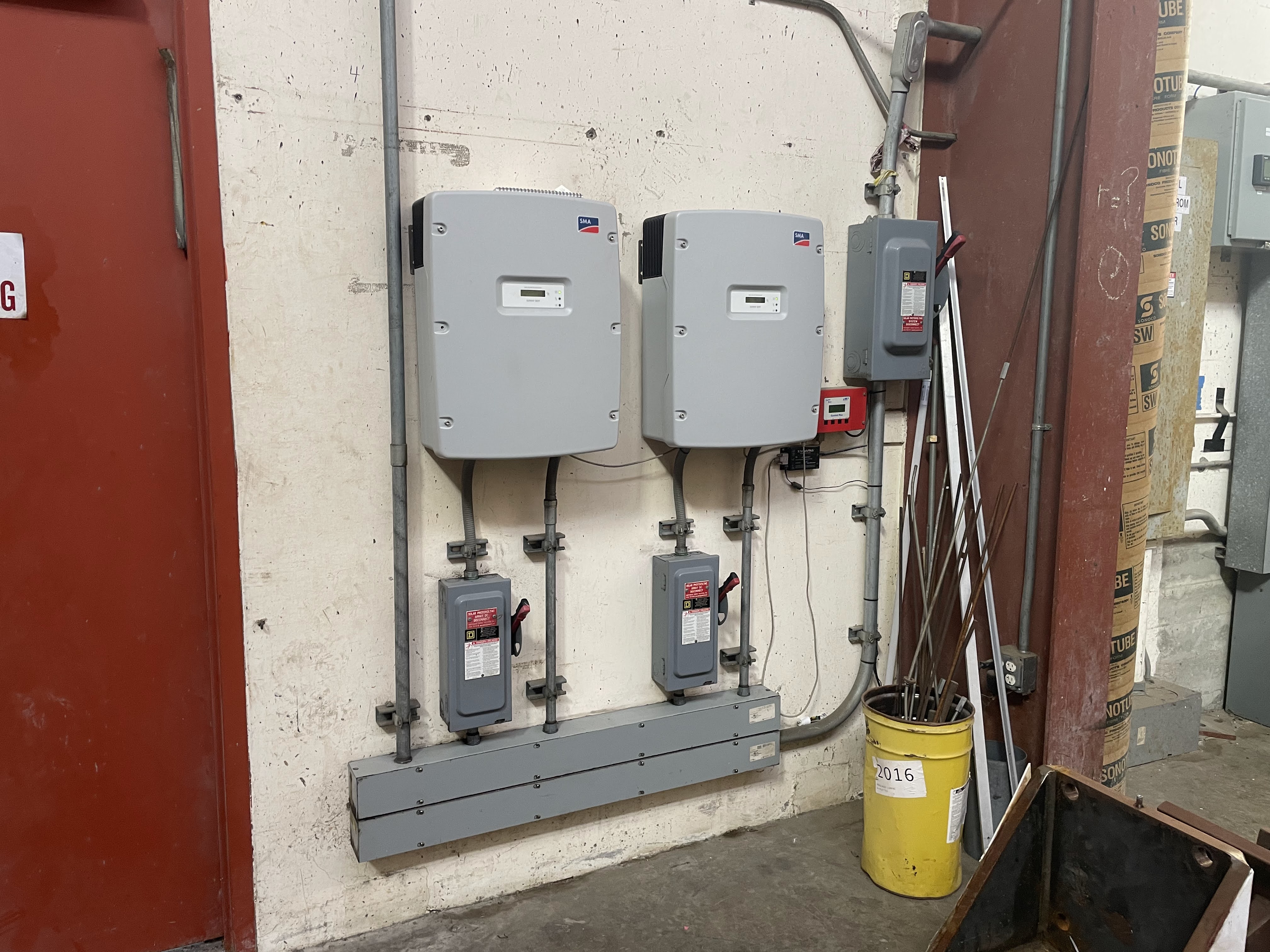
Photovoltaic Panel (PV) Inverters
- 2 upgraded inverters meeting IEEE 1547.2018 certification
- Metering data from other campus PV sites
2 / 7
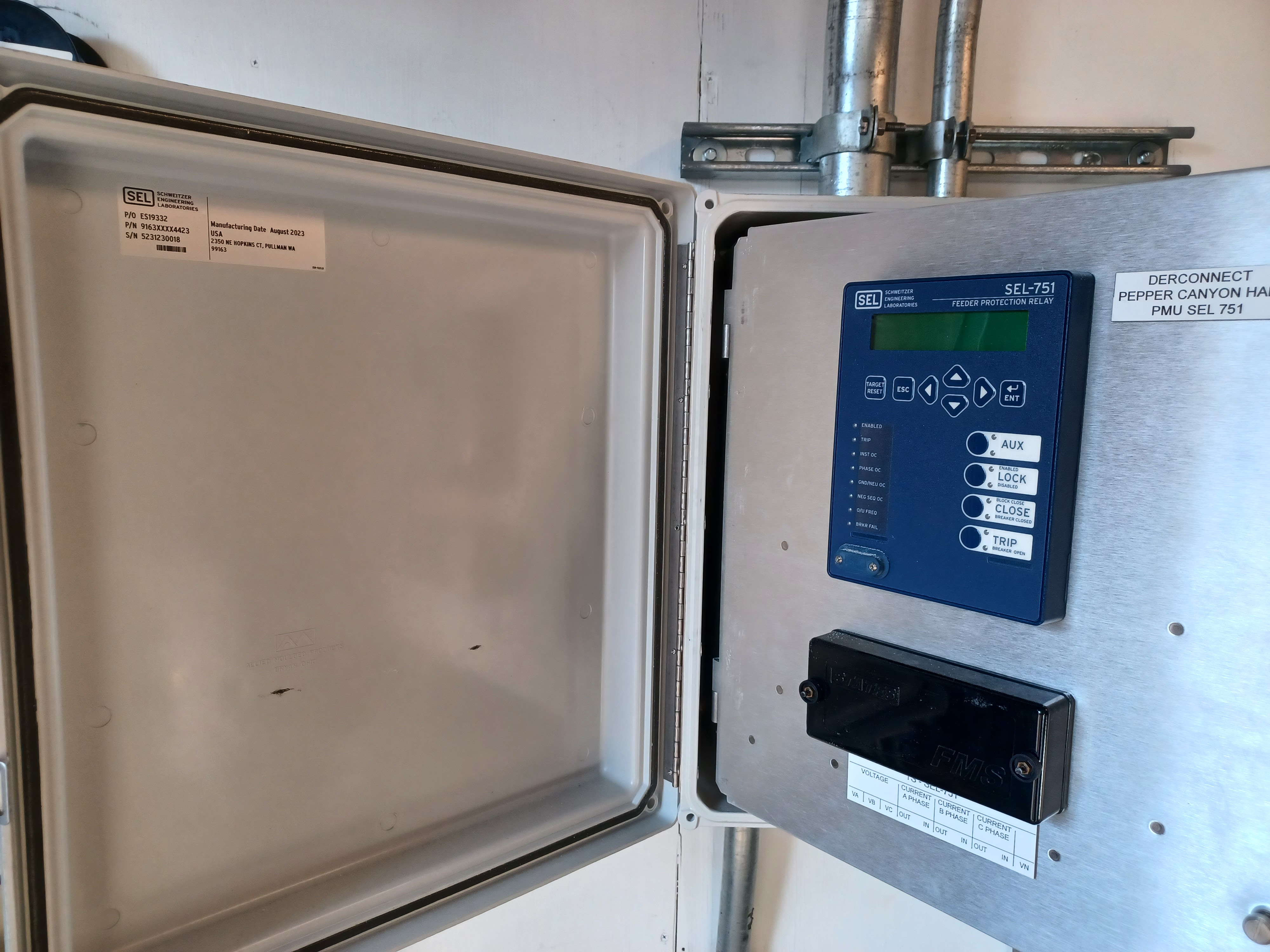
Power Measurement Units
- 8 PMUs installed across the UCSD microgrid
- SEL 751 Units
3 / 7
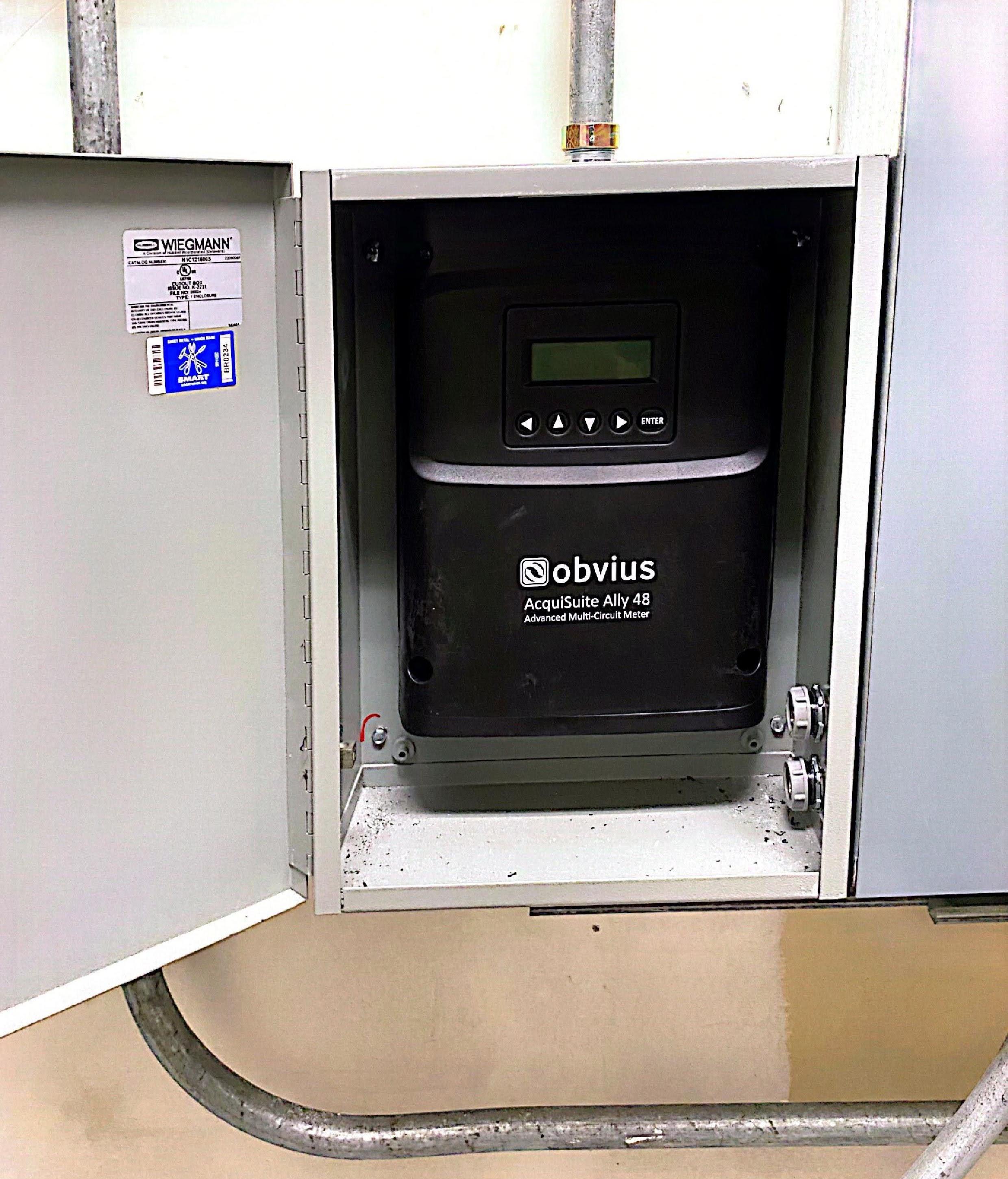
Electrical Metering
- 24 campus buildings with 2 second data collection
- 236 submeters to get power measurements from AHUs, lighting, plug loads, and miscellaneous loads
4 / 7
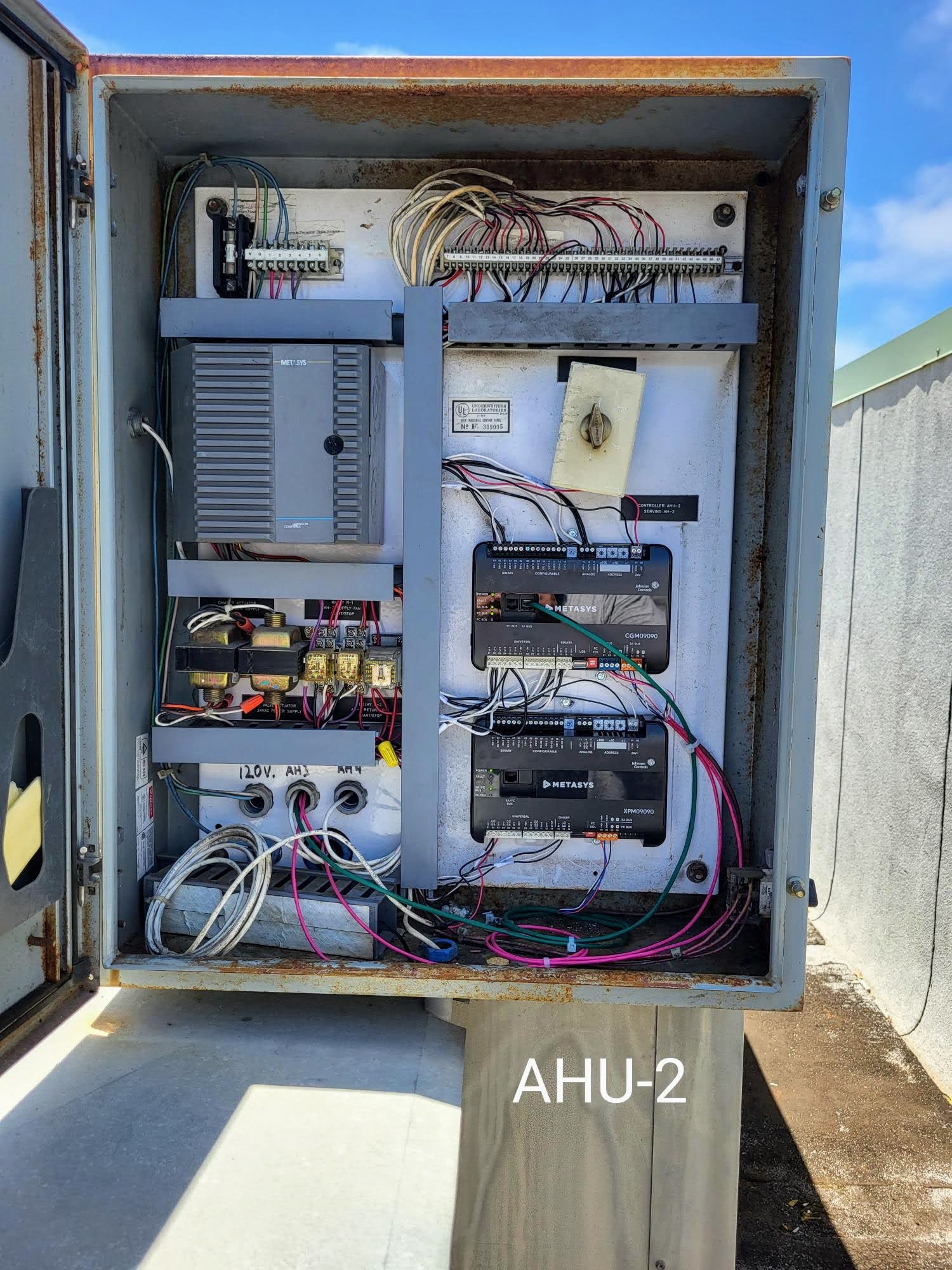
Heating Ventilation and Air Condition Systems
- 10 campus buildings
- Fan speed control in 65 Air Handler Units
- 39 Fan Coil Units
- 10 Exhaust Fans
- 1,170 Thermostats with temperature, occupancy, CO2, and humidity sensors
- 778 Variable Air Volume Boxes
5 / 7
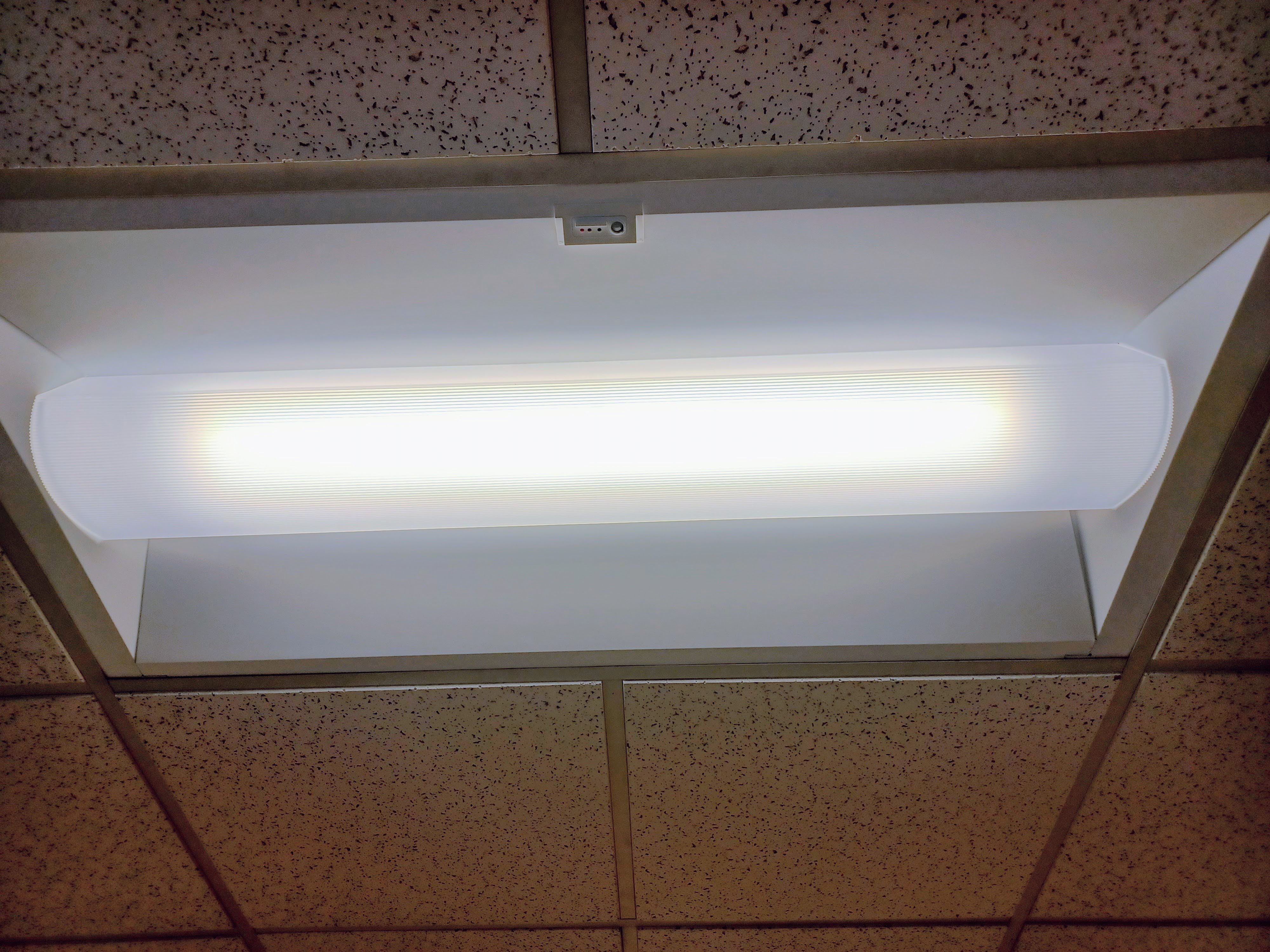
Lighting
- 1,727 LED fixtures with dimming control as well as occupancy and light level sensors
- 865 Florescent Lighting Controllers (ON/OFF)
6 / 7
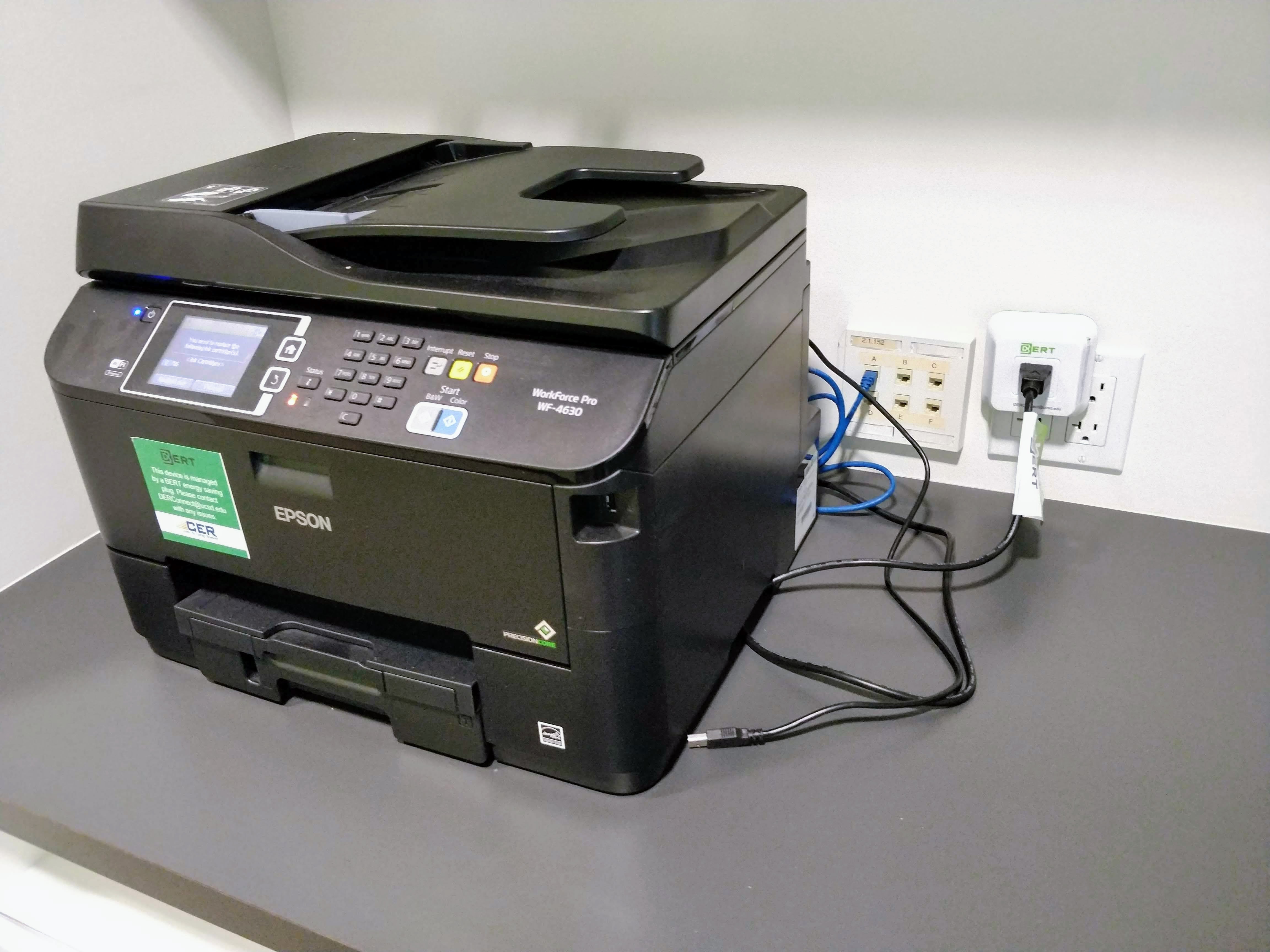
Plug Load Controllers
- 683 plug load controllers
- ON/OFF control and power measurements
- Connected to office equipment such as printers, copiers, water dispensers, TVs
7 / 7
